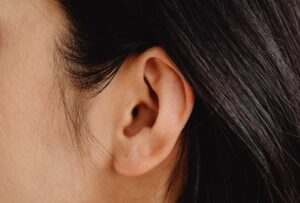Finally choosing to get a hearing aid is a huge step. If you think you’re done with the difficult part, then you’re mistaken. There are so many styles of hearing aids to choose from. You might be overwhelmed with all the different styles.
There are so many factors to consider in getting a hearing aid. There’s how it would look on you and, of course, how comfortable the device is once worn. Let’s learn more about the different styles of hearing aids and maybe you can finally make a decision.
1. Completely in the Canal (CIC)
The thing about hearing aids is that you can easily distinguish how a device would look like just based on its name. Take for example completely in the canal hearing aids. This style of hearing aids is fit inside of your ear canal. Patients with mild to moderate hearing loss can use this style of hearing aid.
What are its pros and cons?
+ CICs are one of the smallest and least visible of all the styles of hearing aids.
+ Because it is placed completely inside of the canal, it is the least likely to pick up wind noise.
– The disadvantage of this style, however, is that its usage time is short because of its small batteries.
– Moreover, it is very limited to hearing aid features because of its size
– Lastly, it is very much prone to earwax clogging the speakers.
2. In the Ear (ITE)
This style of hearing aids is more for patients with mild to severe hearing loss. It can be made in two styles — filling the bowl-shaped area of the outer ear or just the lower half of it. It should be noted that “canal” and “in-the-ear” hearing aids are technically all “in the ear”. It just depends on how internal the device is.
What are its pros and cons?
+ It is much easier to handle given that it’s not too small or too big.
+ It is more fit for people with severe hearing loss.
+ Furthermore, when it comes to battery, this style of hearing aid wins.
– They are more susceptible to moisture and earwax and thus requires frequent cleaning.
– It is also more prone to repairs.
3. Behind the Ear (BTE)
BTEs follow the shape of your ear. It is hooked around your ear and is placed just behind it. There is a tube connecting the hearing aid to an earpiece known as the earmold. The earmold is customized to fit in your ear canal.
What are its pros and cons?
+ It is applicable for any degree of hearing loss from mild, to profound.
+ Moreover, you can get more amplification from this than any other style.
– It is more prone to wind noise as compared to other styles.
4. Receiver in the Canal / Receiver in the Ear (RITE)
This style of hearing aids is like the twin of BTEs. The only difference is that instead of tubes connecting the pieces, it makes use of a tiny wire. The receiver is now out of the hearing aid and is placed at the end of the wire that goes into the ear canal.
What are its pros and cons?
+ Its behind-the-ear portion is less visible.
– Its domes connected to the receiver is also prone to being clogged by earwax.
– They are very discreet and small devices and small devices tend to use a smaller battery.
Those are the 4 basic styles of hearing aids available in the market. Always consider how it would look like, the many features, and of course, don’t risk comfort. Hopefully this has helped you make a decision on what style you’re getting.
For the perfect hearing aid you’re looking for, feel free to visit us at Active Hearing Center for a comprehensive hearing test.








